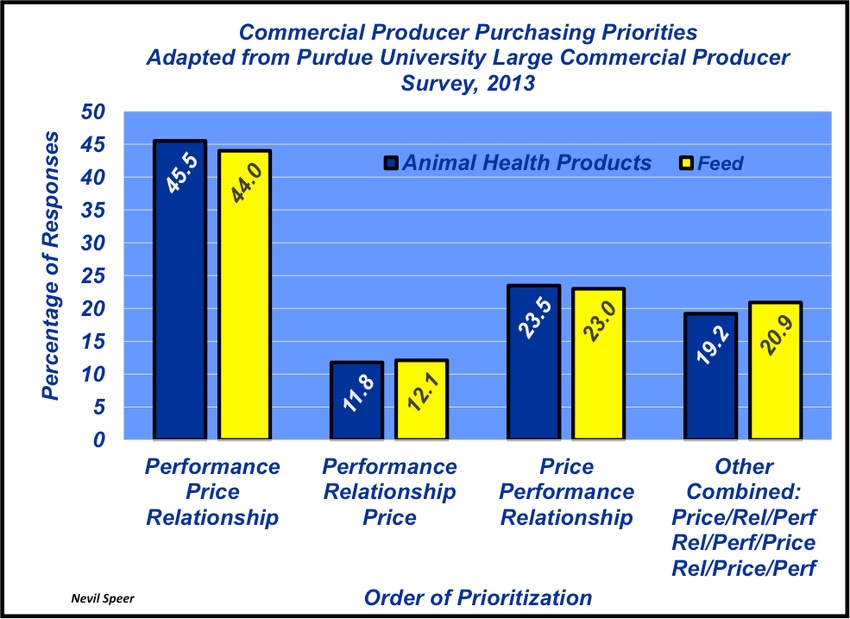Producer purchasing priorities
Cattle producers know what they want from the inputs they buy.
January 7, 2016

The Center for Food and Agricultural Business at Purdue University conducts a nationwide survey of large commercial producers (LCP) every five years. The survey’s intent is to better understand the decision-making process among larger ag producers – especially as it pertains to purchasing inputs and services.
The most recent survey was conducted in 2013 and targeted seven key commodities: corn and soybeans; wheat, barley and other small grains; cotton; fruit, nuts and vegetables; dairy; hogs; and cattle. Overall survey results are based on 1,679 respondents – including 186 cattle operations.
One of the key aspects of survey results includes differentiation of buying preferences among producers. Three key attributes were evaluated within the survey results: price, performance and dealer-retailer relationship. Producers were asked to rank the importance of the three attributes, creating a total of six possible combinations.

Livestock producers ranked the importance of the attributes for animal health and feed products, respectively. The results are outlined in this week’s illustration. The overwhelming majority of producers ranked performance first. Meanwhile, the price – performance - relationship prioritization order accounted for nearly one-fourth of respondents.
It’s also interesting to note that 68% of performance – price – relationship buyers for animal health products had the same preferences in their feed purchases. In other words, large commercial producers tend to be generally consistent about their priorities across their respective input needs. And the priority is this: they want the stuff to work.
Nevil Speer is based in Bowling Green, Ky., and serves as vice president of U.S. operations for AgriClear, Inc. – a wholly-owned subsidiary of TMX Group Limited. The views and opinions of the author expressed herein do not necessarily state or reflect those of the TMX Group Limited and Natural Gas Exchange Inc.
You might also like:
7 ranching operations who lead in stewardship, sustainability
Why we need to let Mother Nature select replacement heifers
Photo Gallery: Laugh with Rubes cow cartoons
Beta agonists wrongly blamed for fatigued cattle syndrome
Lessons from the 2015 cattle market wreck
Feed and bed your cows without all the waste
A waterer that never freezes? It's true
About the Author(s)
You May Also Like


.png?width=300&auto=webp&quality=80&disable=upscale)


